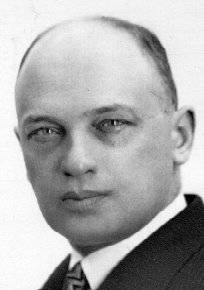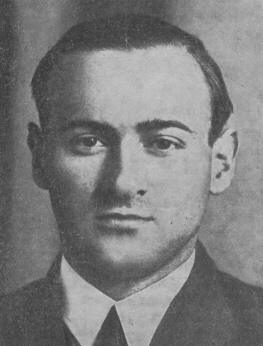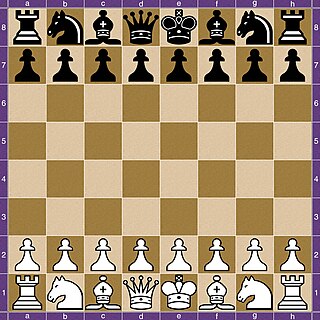
Aron Nimzowitsch was a Latvian born-Danish chess player and writer. In the late 1920s, Nimzowitsch was one of the best chess players in the world. He was the foremost figure amongst the hypermoderns and wrote a very influential book on chess theory: My System (1925–1927). Nimzowitsch's seminal work Chess Praxis, originally published in German in 1929, was purchased by a pre-teen and future World Champion Tigran Petrosian and was to have a great influence on his development as a chess player.
The opening is the initial stage of a chess game. It usually consists of established theory. The other phases are the middlegame and the endgame. Many opening sequences, known as openings, have standard names such as "Sicilian Defense". The Oxford Companion to Chess lists 1,327 named openings and variants, and there are many others with varying degrees of common usage.

The Encyclopaedia of Chess Openings (ECO) is a reference work describing the state of opening theory in chess, originally published in five volumes from 1974 to 1979 by the Serbian company Šahovski Informator. It is currently undergoing its fifth edition. ECO may also refer to the opening classification system used by the encyclopedia.

Savielly Tartakower was a Polish chess player. He was awarded the title of International Grandmaster in its inaugural year, 1950. Tartakower was also a leading chess journalist and author of the 1920s and 1930s.

Siegbert Tarrasch was a German chess player, considered to have been among the strongest players and most influential theoreticians of the late 19th and early 20th century.
In chess, the fianchetto is a pattern of development wherein a bishop is developed to the second rank of the adjacent b- or g-file, the knight pawn having been moved one or two squares forward.
Alekhine's Defence is a chess opening that begins with the moves:
The Réti Opening is a hypermodern chess opening whose "traditional" or "classic method" begins with the moves:

Richard Selig Réti was an Austro-Hungarian, later Czechoslovakian, chess player, chess author, and composer of endgame studies.
The King's Pawn Game is any chess opening starting with the move:
The Queen's Gambit Declined is a chess opening in which Black declines a pawn offered by White in the Queen's Gambit:
In the game of chess, Indian Defence or Indian Game is a broad term for a group of openings characterised by the moves:

Louis Paulsen was a German chess player. In the 1860s and 1870s, he was among the top players in the world. He was a younger brother of Wilfried Paulsen.

Friedrich Sämisch was a German chess player and chess theorist. He was among the inaugural recipients of the title International Grandmaster from FIDE in 1950.
A Semi-Open Game is a chess opening in which White plays 1.e4 and Black breaks symmetry immediately by replying with a move other than 1...e5. The Semi-Open Games are also called Single King Pawn, Asymmetrical King Pawn, or Half-Open Games, and are the complement of the Open Games or Double King Pawn Games which begin 1.e4 e5.
The Falkbeer Countergambit is a chess opening that begins:

The game of chess is commonly divided into three phases: the opening, middlegame, and endgame. There is a large body of theory regarding how the game should be played in each of these phases, especially the opening and endgame. Those who write about chess theory, who are often also eminent players, are referred to as "theorists" or "theoreticians".
A school of chess denotes a chess player or group of players that share common ideas about the strategy of the game. There have been several schools in the history of modern chess. Today there is less dependence on schools – players draw on many sources and play according to their personal style.








